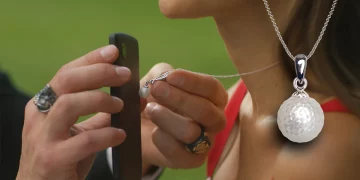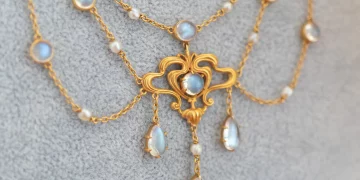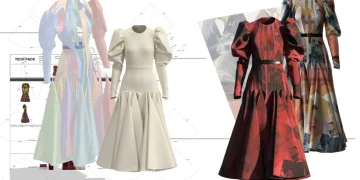Abstract
Jewelry design is an art form that has been passed down through generations, with centuries of tradition influencing contemporary practices. However, modern jewelry designers face the challenge of maintaining a connection to the rich history of the craft while simultaneously pushing the boundaries of creativity and innovation. This article explores how jewelry designers navigate the delicate balance between honoring tradition and embracing innovation, examining how they blend classical techniques and timeless aesthetics with cutting-edge materials, technologies, and conceptual approaches. Through interviews with designers, case studies of successful brands, and an analysis of industry trends, we will delve into how this balance can result in jewelry that is both timeless and forward-thinking.
1. Introduction
Jewelry design, as both an art form and a craft, has evolved dramatically over the centuries, with styles, materials, and techniques constantly being reinterpreted and adapted to suit the tastes of each new generation. From the ornate, handcrafted designs of ancient civilizations to the sleek, minimalist lines of modern-day creations, the world of jewelry has always been a space where tradition meets innovation.
In an age where consumers are increasingly drawn to personalization and bespoke designs, jewelry designers must find a way to remain relevant while staying true to the age-old practices that have made jewelry an essential part of human culture for thousands of years. But how do designers navigate this complex space between the tried-and-true techniques of the past and the possibilities offered by new technologies and design philosophies? How can they find harmony between honoring traditional craftsmanship and embracing new, bold ideas?
2. Understanding Traditional Jewelry Design
2.1 The Historical Foundations of Jewelry Design
Jewelry has always been more than just an accessory—it has carried cultural, emotional, and even spiritual significance. Throughout history, different cultures have developed their own unique styles of jewelry, each reflecting the values and craftsmanship of its time. These traditions often emphasize meticulous craftsmanship, the use of precious materials, and an understanding of symbols and metaphors.
- Classical Jewelry: In ancient Greece and Rome, jewelry was a symbol of wealth, power, and status. Designs often featured intricate metalwork, gemstones, and symbols of gods and nature. Techniques such as granulation and filigree were commonly used, requiring a high level of skill and precision.
- Victorian Jewelry: The Victorian era (1837–1901) was marked by sentimentality in jewelry design. Pieces were often symbolic, reflecting the era’s preoccupation with love, loss, and family. Common designs included lockets, brooches, and rings with engraved messages, as well as mourning jewelry made from human hair.
- Art Deco Jewelry: The Art Deco movement of the 1920s and 1930s was known for its geometric shapes, clean lines, and lavish use of materials like diamonds, platinum, and jade. Art Deco pieces were often crafted with a sense of glamour and modernity, and they remain a major influence on contemporary design.
2.2 The Enduring Appeal of Traditional Techniques
Traditional jewelry-making techniques such as hand engraving, filigree, and stone setting are valued for their meticulous craftsmanship and timeless quality. These methods have been honed over centuries and continue to be passed down through generations of jewelers. They represent a commitment to quality, precision, and artistry that is hard to replicate with modern machinery.
- Handcraftsmanship: The personal touch involved in handcrafting a piece of jewelry imbues it with a sense of individuality. Many consumers today still appreciate the value of hand-forged designs, believing they carry more authenticity and a deeper connection to the artisan’s craft.
- Heritage Techniques: From the intricate metalwork of the Byzantine Empire to the enamel techniques of the Renaissance, traditional methods are often seen as a direct link to the past. For many jewelry designers, there is a profound respect for these historical techniques, and incorporating them into modern designs is a way to preserve cultural heritage.
3. The Role of Innovation in Modern Jewelry Design
3.1 Technology and Modern Techniques
While traditional craftsmanship plays a central role in many jewelry collections, the rise of new technologies has had a transformative effect on the jewelry industry. Designers now have access to advanced tools and techniques that allow them to push the boundaries of creativity and redefine what is possible in jewelry design.
- 3D Printing: One of the most significant innovations in modern jewelry design is the use of 3D printing. This technology allows designers to create intricate, highly detailed designs with a level of precision that would be impossible using traditional methods. 3D printing also enables rapid prototyping, allowing designers to experiment with different forms and structures before committing to a final piece.
- CAD Software: Computer-aided design (CAD) software has revolutionized the way designers create jewelry. It allows for a high level of precision and the ability to visualize designs in 3D before they are physically created. CAD software also enables easy modification of designs, making it possible to test different variations quickly.
- Lab-Grown Gemstones: The rise of lab-grown gemstones, such as diamonds, has made it easier for designers to incorporate sustainable and ethically sourced materials into their creations. These stones are chemically identical to natural gemstones but are often more affordable and have a smaller environmental impact.
3.2 Conceptual Innovation: A New Approach to Jewelry Design
Beyond technological advancements, conceptual innovation is also playing a role in reshaping the jewelry industry. Designers are increasingly focusing on the symbolic meaning of their pieces, as well as their ability to make a statement or communicate an idea. This trend is driving new forms of jewelry, where design becomes not just an aesthetic but a narrative or a social commentary.
- Wearable Art: Many contemporary designers are shifting away from traditional notions of jewelry as mere decoration and are instead creating pieces that challenge the very definition of jewelry. These designs might incorporate unconventional materials, unusual shapes, or even elements of performance art, blurring the lines between jewelry, sculpture, and fashion.
- Sustainability and Ethical Innovation: As consumers demand more sustainable products, many jewelry designers are innovating in ways that align with environmental and ethical values. For instance, some designers use recycled metals or repurposed stones in their creations, while others focus on ethically sourced materials. These innovations reflect a new consciousness in the industry that combines beauty with responsibility.

4. How Designers Find the Balance: Traditional Meets Modern
4.1 The Role of Inspiration
Many contemporary jewelry designers look to history for inspiration while maintaining a modern perspective. By studying the design principles of past eras, designers can create pieces that resonate with historical significance but also feel fresh and relevant to today’s market. They may draw from the geometry of Art Deco, the symbolism of Victorian jewelry, or the delicate craftsmanship of ancient artisans but reimagine these elements in new ways.
- Reinterpretation of Classic Motifs: Designers often take traditional motifs and reinterpret them for modern tastes. For example, the classic heart shape—long a symbol of love and sentiment—might be reimagined in a minimalist style, or a vintage design might be updated with modern materials like titanium or carbon fiber.
- Fusion of Old and New: The perfect balance often lies in blending traditional techniques with contemporary aesthetics. For example, a designer might use hand-engraved patterns on a sleek, modern metal base or incorporate old-world gem-setting techniques into minimalist designs. This fusion allows the designer to honor traditional craftsmanship while also appealing to modern sensibilities.
4.2 Consumer Demand for Timeless Yet Contemporary Pieces
Modern consumers are increasingly looking for jewelry that transcends trends and speaks to their individuality. Many are drawn to pieces that combine the timeless appeal of traditional designs with the innovation and personalization available in today’s market. Customization, for instance, has become a major trend, with consumers wanting to create bespoke pieces that reflect their unique styles and stories while still adhering to certain classic aesthetic principles.
- Timeless Elegance: While consumers may be drawn to innovative materials or cutting-edge design, they still value the timeless elegance that comes with classic jewelry forms. Whether it’s a diamond solitaire ring, a pearl necklace, or a vintage-inspired bracelet, many buyers seek pieces that will stand the test of time both in terms of design and material.
- Modern-Day Heirlooms: As more consumers look for jewelry that they can pass down to future generations, the desire for timeless designs has never been stronger. Many modern designers are creating pieces that feel like modern-day heirlooms, combining traditional craftsmanship with new techniques and materials to create jewelry that has enduring value.
5. Conclusion
Finding the perfect balance between tradition and innovation is a continuous challenge for jewelry designers. The key lies in respecting the artistry and craftsmanship of the past while embracing new technologies and conceptual approaches that redefine what jewelry can be. As the jewelry industry evolves, designers are blending the best of both worlds—crafting pieces that honor the rich heritage of jewelry design while also pushing the boundaries of creativity and innovation.
For consumers, this means a growing appreciation for pieces that combine the timeless elegance of classic designs with the innovation and personal expression of contemporary jewelry. The future of jewelry lies in this balance, and the designers who can successfully navigate this intersection will likely define the next era of jewelry design.

















































